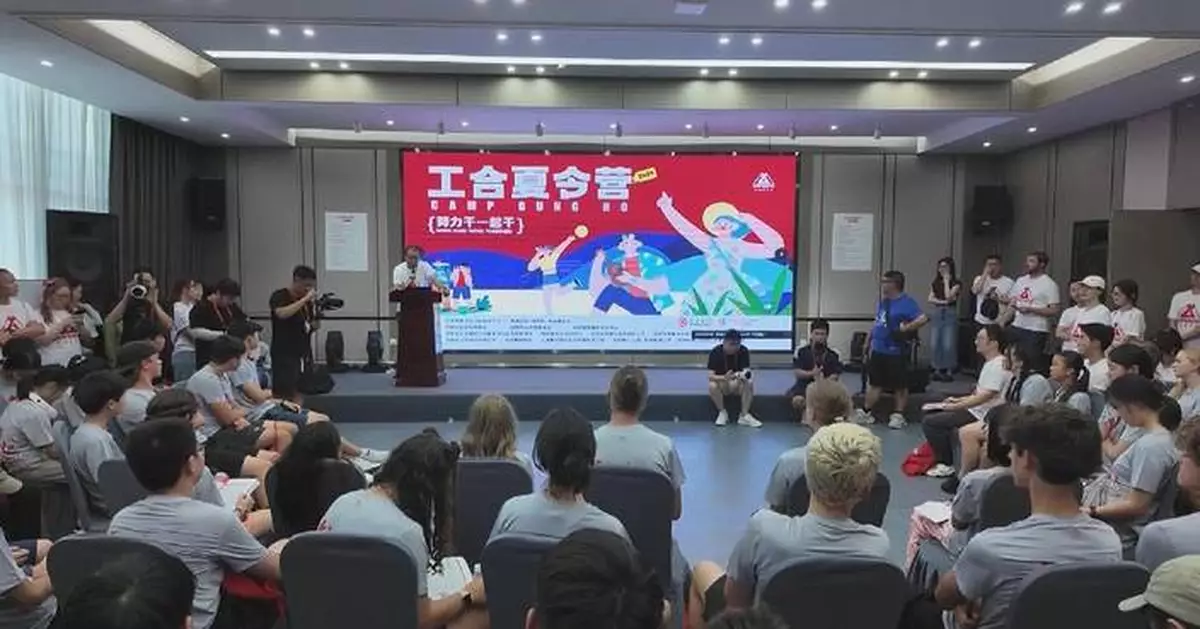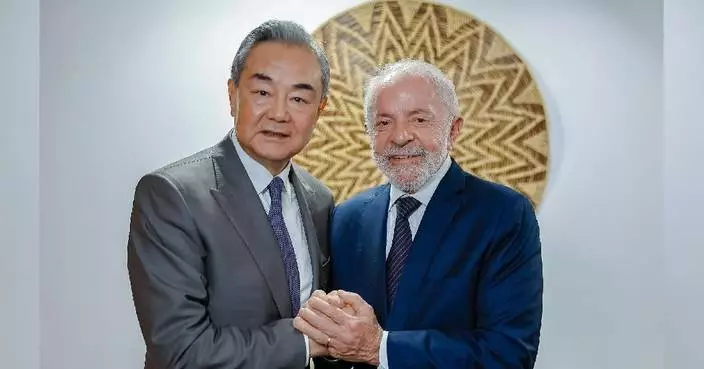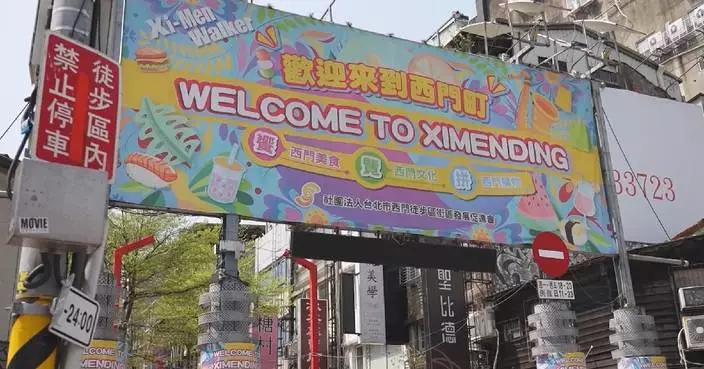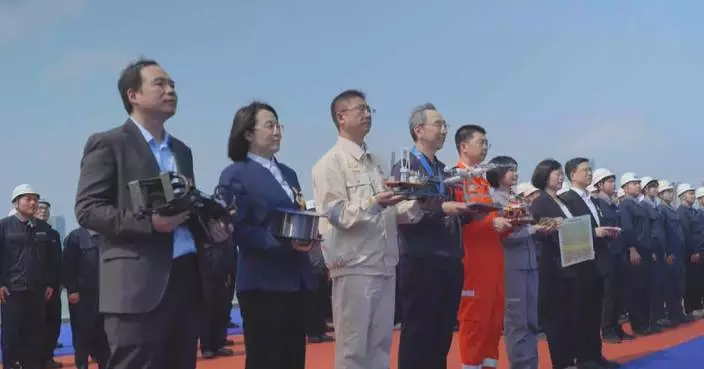A group of American students is fostering cultural exchange and building friendships with Chinese peers at a summer camp in Wuxi, east China's Jiangsu Province.
The 2024 China-America Summer Camp in Wuxi will bring together 46 students from seven U.S. states and 48 Chinese students for a ten-day immersion program. The students will participate in activities, including cultural exchanges, academic visits and community service.
"I really enjoy coming here and participating in many different activities. I really love China," said Aurelia Niamh Thompson, an American student.
"I am happy to participate in this summer camp, which allows me to exchange Chinese and American cultures with our American friends. I can show them China's history and culture and improve my English," said Fu Xinwang, a Chinese student.
The visiting American students have been studying Chinese for over five years and have a deep interest in Chinese culture.
"I think Wuxi is very beautiful. I have been studying Chinese for many years, and I wanted to come to China to communicate with others and learn more Chinese," said Katherine Emma Nichols, one of American students.
In the coming days, all students will visit Yixing Bamboo Forest, Three Kingdoms Film and Television City, and Huishan Ancient Town.
They will also immerse in activities including pottery making, Chinese Kung Fu, and various sports, experiencing the charm of Chinese traditional culture.
"Wuxi has been a hub for international exchanges in recent years and it is a city that beautifully combines traditional and modern culture. We hope that during camp, Chinese and American children will not be divided by nationality, but will work together to face life's challenges," said Wang Weilian, secretary general of a public welfare promotion center in Shanghai.
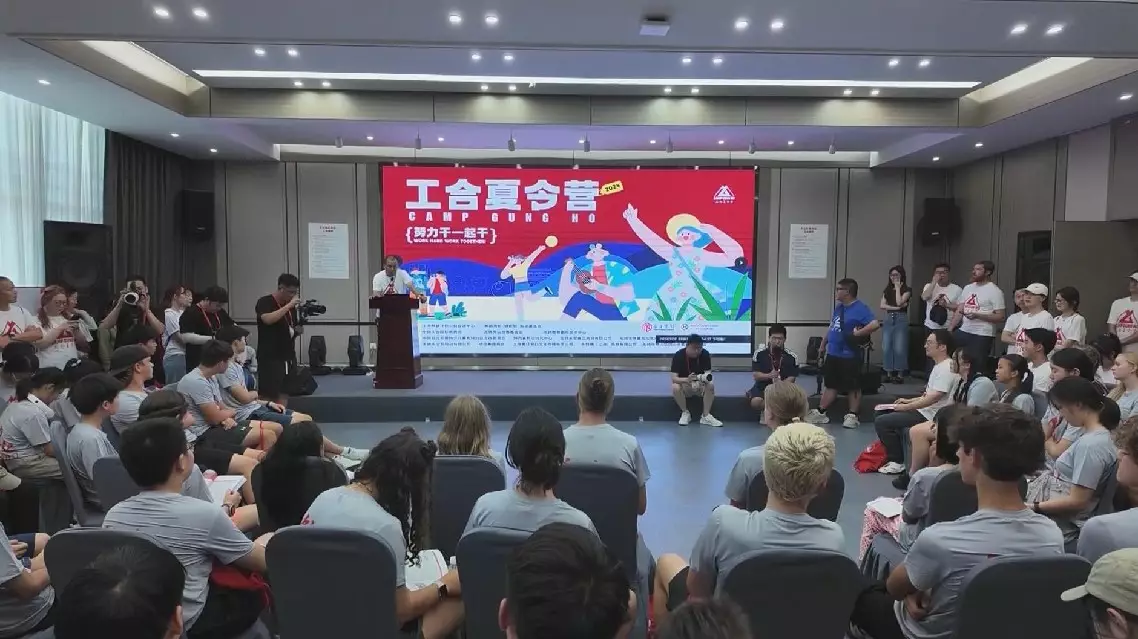
Summer camp in Wuxi fosters exchanges between Chinese, U.S. students
U.S. tariffs on Cambodia, which were set at 49 percent, have sparked concerns among the Southeast Asian country's key export industries such as garment manufacturing amid the ensuing economic uncertainties.
On April 2, U.S. President Donald Trump announced the 49 percent "reciprocal tariff" on goods imported from Cambodia, the highest among all countries. Days later, the U.S. reduced the so-called "reciprocal tariff" to 10 percent for 90 days, offering a window period to Cambodia for negotiations with it.
Cambodian businesspeople say the tariffs have the potential to wreak havoc on the country's manufacturing sector, which, according to data from the World Bank, makes up around a fifth of the country's GDP.
"For U.S. manufacturers, definitely, there will be a big impact. If manufacturers are focusing on U.S. products, they are now in the middle. They don't know what they should do at the moment because the tariff now from Cambodia to the U.S. is actually quite high," said Dr. Ben Li, a Hong Kong investor in Cambodia and Chairman of the Cambodia Chinese Commerce Association.
Nevertheless, Li sees the tariff hike as an opportunity to export more Cambodian goods to the European Union, where a majority of Cambodian exports enjoy duty-free status.
"I always say there will be a light (at the end of the tunnel.) Even now, the U.S. tariff is so high, it's going to be so high after 90 days, we don't know. But, there's still a big market to Japan or to the European Union. There's still a big opportunity there," he said.
The Cambodian investor also believes the development of major infrastructure projects will help support Cambodia's economy.
"Especially the new canal and then the new airport, and the railways which connect to China. I believe once the logistics and infrastructure are built up, it can help the whole country's economy. By reducing the transportation costs, it can also mitigate the tariff costs," he said.
Cambodia and the U.S. held their first tariff negotiations on April 16, with more expected to follow. Local experts said the stakes are high for the country's workers.
"If this negotiation fails, there will be a significant impact. It will include the garment and travel goods sector. These sectors consist of about 1,068 factories and 930,000 workers. The income generated from these sectors is about 3 billion dollars per year. So it would significantly impact Cambodia's economy, jobs and incomes," said Chey Tech, a socio-economic research and development consultant from Dynamic Alliance Consulting.
Despite the potential risks, Tech expressed his optimism about a positive outcome, citing Cambodian Prime Minister Hun Manat's letter to Trump on April 4.
"The Prime Minister's letter confirmed that Cambodia would reduce the tariff rate for U.S. goods to 5 percent. Second, Cambodia is the least developed country. Third, Cambodia produces goods that the developed countries won't produce. We asked whether the U.S. would be able to produce these low-cost products. It cannot," said Tech.
In 2024, Cambodia exported goods of 9.9 billion dollars to the U.S., making it the country's largest market, accounting for 37 percent of Cambodia's total exports.

49-percent US tariffs sparks worry among Cambodia's key export industries



